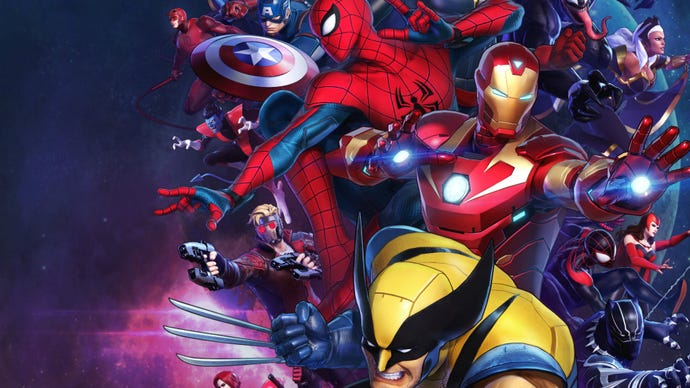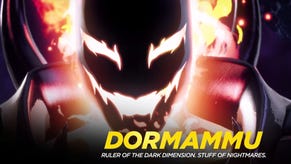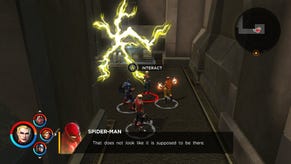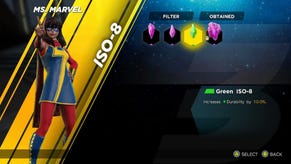Marvel Ultimate Alliance 3: The Black Order Review
After a decade, a new alliance is here.
This article first appeared on USgamer, a partner publication of VG247. Some content, such as this article, has been migrated to VG247 for posterity after USgamer's closure - but it has not been edited or further vetted by the VG247 team.
We've been waiting a long time for a new Marvel Ultimate Alliance. Back in 2008, Marvel Studios introduced the world to Iron Man, properly kicking off the Marvel Cinematic Universe. Since then there have been 23 movies in total, culminating in this year's Captain Marvel, Avengers: Endgame, and Spider-Man: Far From Home. Two years prior to Iron Man, the first Marvel: Ultimate Alliance released on nearly every console available at the time. And now we're finally getting a third entry in the series, Marvel Ultimate Alliance 3: The Black Order for Nintendo Switch.
The Marvel Ultimate Alliance games, and X-Men Legends games that preceded them, have always been a grab bag of Marvel characters and continuity, drawing on past and present versions of Marvel's heroes for its material. They were a place where Spider-Man, Captain America, Wolverine, Captain Marvel, and other high-profile heroes could get together to slam their fists into equally-iconic villains. They were couch co-op at their finest, letting you and three friends take on the roles of your favorite Marvel Comics characters. There was really nothing like it outside of maybe the Lego Marvel titles.
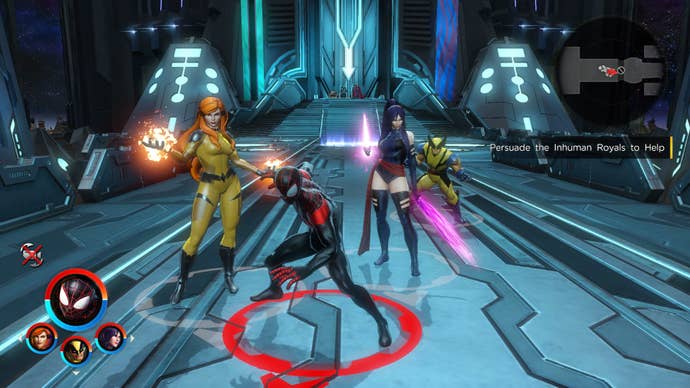
Marvel Ultimate Alliance 3 draws on the same conflict presented in Avengers: Infinity War and Avengers: Endgame, with our heroes trying to keep the Infinity Stones out of the hands of Thanos and his Black Order. But while there's plenty of influence from the Marvel Cinematic Universe in the primary cast, the 36 playable heroes also pull from Marvel Comics, television, animation, and even other games. Movie heroes like Captain America, Iron Man, Captain Marvel, and Black Panther take center stage, but recent comic events like Inhumans vs. X-Men are also included. Daredevil's look is inspired by his Netflix counterpart,but many other heroes share voice actors with their cartoon iterations. Eagle-eyed players will also note that heroes have moves that call back to other video games. For instance, Spider-Man's Web Drone and Sticky Situation moves are pulled from the recent PlayStation 4 game, and Wolverine's Berserker Barrage will sound familiar to Marvel vs. Capcom fans.
The developers are clearly fans, because there are some deep pulls here. Elsa Bloodstone is a playable character, and I doubt most mainstream folks even know who she is. You'll also see appearances from heroes and villains like Thane, Ultimo, and Cosmo the Psychic Dog. Likewise, Marvel Ultimate Alliance 3 is a travelogue of the Marvel Universe, including jaunts to Avengers Tower, the Inhumans' city of Attilan, and Dormammu's Dark Dimension. Every level looks fantastic, with Team Ninja using the camera to really sell the scope and presentation of certain areas, like the immense red moon looming over the Hand's ancient Japanese fortress of Shadowland.
The fanservice in Marvel Ultimate Alliance 3 is truly first-rate, the only area where it really falters being in the selection of alternate costumes. In previous games, these costumes included entirely different models, like Spider-Man's Iron Spider-Man armor with its mechanical legs. In Marvel Ultimate Alliance 3 though, other costumes are only color swaps, like Captain Marvel's Kree colors. I would've loved a wider variety of costumes and some alternate models. Deadpool as a chef outfit in the Expansion Pass, so perhaps this will be addressed in DLC, alongside any additional characters.
They Who Wield Power
While the previous games were published by Activision and handled by Western developers, Marvel Ultimate Alliance 3 is a partnership between Nintendo, Marvel Games, and Koei Tecmo. The development duties have fallen to Koei Tecmo's Team Ninja, who have worked with Nintendo on Metroid: Other M, Hyrule Warriors, amd Fire Emblem Warriors. Their expertise has changed up combat, mostly for the better. While the previous games were closer to Diablo-style dungeon crawlers where you could blow up everything in your path with little thought, Ultimate Alliance 3 tries to add some strategy to the mix.
Your attacks break down to four different types: light and heavy moves, special abilities, and Extreme attacks. You have up to four abilities, unlocked at specific levels, and accessible by holding down L and pressing a face button. As you attack enemies, you fill up the Extreme gauge, allowing you to pull off screen-clearing attacks once the meter is full.
Hero abilities can work together to create more powerful effects based on various traits, referred to as Synergies. Wolverine's slashing claws get bigger after being reflected off of Captain America's shield, while Storm's tornado explodes when combined with one of Iron Fist's combo abilities. If you're playing alone, you can synergize by using abilities at the same time as the CPU. There are a number of different s effects, but the main point is they do more damage.
This makes team composition very important in Marvel Ultimate Alliance 3. You'll not only receive passive bonuses for picking various themed groups of heroes-X-Men, New Avengers, Royalty, and so on-but you also want to think about Synergies and specific attacks. If you don't use these abilities, it will punish you hard.

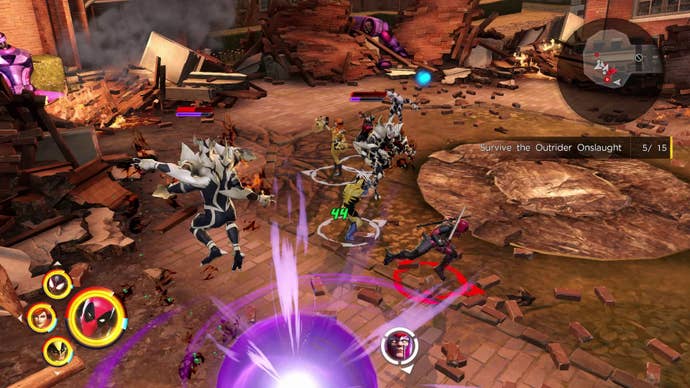
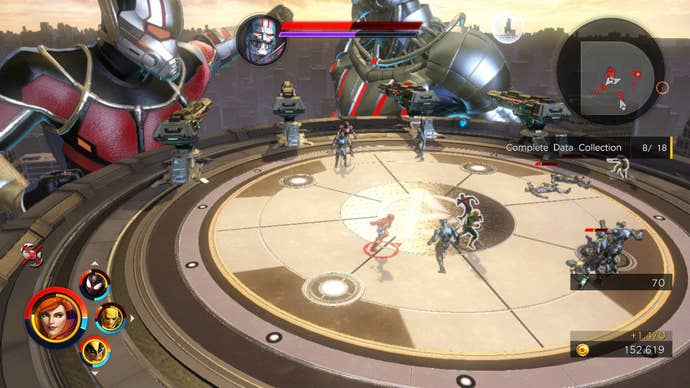
The Black Vortex
Interface constraints can unfortunately make all of this a little tedious. You can only look at the detailed abilities page, which outlines an abilities traits, type, and strengths, if that hero is in your current team of four. This means sometimes when I was looking for a specific combination of abilities, I had to go to Hero Select, pull a hero into my team, look over their abilities, and then repeat the process until I found what I was looking for. It's a small bit of tedium that adds up over time, especially with 36 heroes to choose from.
The second issue is the camera. Marvel Ultimate Alliance 3 has two camera modes. The Classic Camera is a pulled back, almost top-down viewpoint, which is useful for most of the game and couch co-op. Then there's the Heroic Camera, which focuses on the user-controlled hero. The problem is two-fold. The camera can frequently get caught behind bits of the level, obscuring your view or whatever is happening, or simply be too far away to see your character. This latter issue is somewhat okay on a big-screen television, but it becomes huge if you're playing Marvel Ultimate Alliance 3 in handheld mode. When boss fights pull the camera out into a staticposition, handheld mode can become completely unreadable, with only the bright colored outline giving you a vague idea where your hero is in the scrum.
It's even worse when multiple attacks are happening at once. When all four heroes are using their Extreme attacks together and the camera's pulled out, you're mostly hoping that you're facing in the right direction—and that's on a television. Combined with a framerate that tries to stay at 30fps, but can dip hard during those aforementioned Extreme attacks, I'd say that playing Marvel Ultimate Alliance 3 in handheld is a struggle.
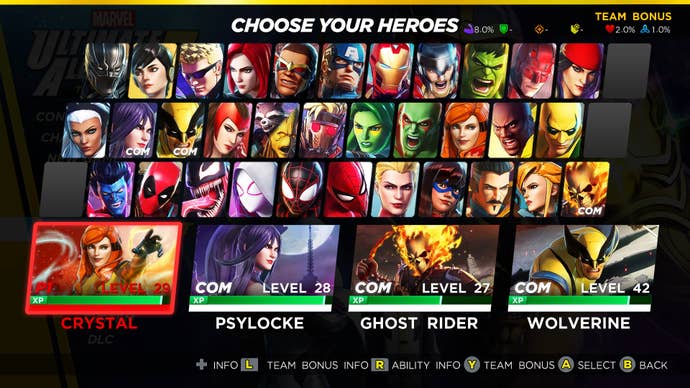
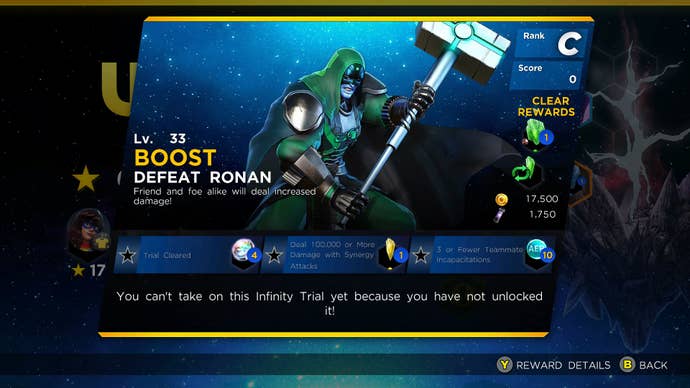
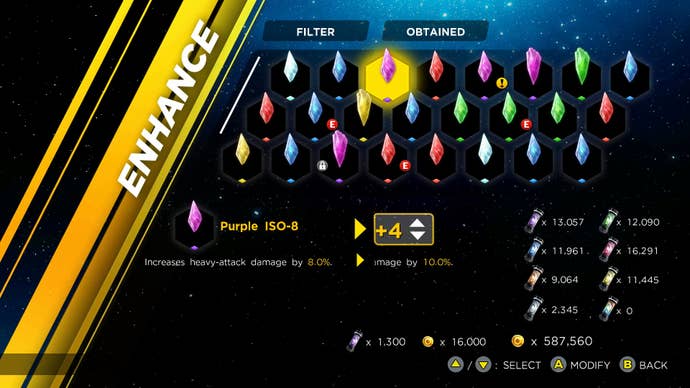

Contest of Champions
Still, Marvel Ultimate Alliance 3 is a great time when playing with friends, whether online or offline. Offline, you can use any combination of Joy-Cons and Pro controllers, or connect systems together for local play on your own Switch. I rocked the two-player co-op and it was loads of fun working together, jumping between heroes, and throwing off Synergy attacks everywhere.
Online, you can either create a room that others can join, search for rooms other players have created, or see if anyone on your friends list is playing. (There's no way to offer a friend code for a specific room. They just have to be playing and have a room open.) According to some players on Reddit, you can even take offline co-op partially online. I tried online play, which worked fine, but didn't test the mix of couch co-op and online, so your mileage may vary in that respect.
As I noted before, the story campaign in Marvel Ultimate Alliance 3 can be completed in around 15 hours. Outside of that, you'll also probably need to replay parts of it to level other heroes (XP isn't shared), and there are an extensive number of Trials to tackle. These Trials have specific win conditions, like enemies only taking damage from Synergy attacks or having to tackle a section of the game with a single character. These will test you, as complete the first win condition is usually pretty easy, but the third condition is pretty hard on some levels. Not only are these Trials key to unlocking the final four characters in the roster, they also offer up costumes, XP Cubes, and ISO-8 to improve your characters.
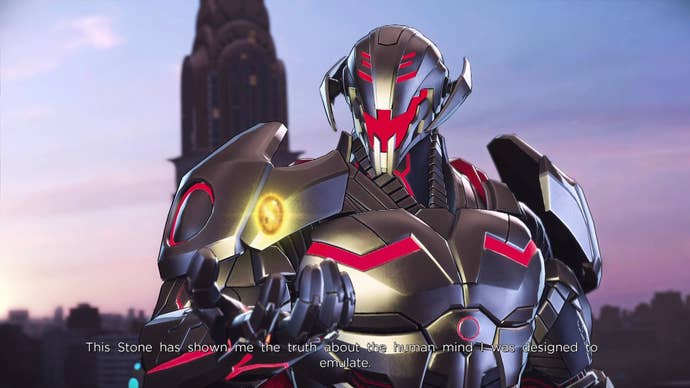
Marvel Ultimate Alliance 3 does have some problems, noticeably the camera issues, which were supposedly improved with 1.0.1 patch, but seem largely the same. There's also a general combat readability and some performance dips that become more pronounced in handheld mode. Acknowledging these problems, I still had a blast from beginning to end, and I'm currently hammering my way through all of the available Trials. Neither of the previous games were amazing, each with their own issues, but they were ultimately pretty fun. Overall, Marvel Ultimate Alliance 3 is a better game than its predecessors, and represents a lot of love for everything Marvel at the same time. These heroes stumbled a bit, but in the end, it's still a win for this ultimate alliance.
ConclusionThe Ultimate Alliance comes roaring back with this Nintendo Switch exclusive. Marvel Ultimate Alliance 3 pulls inspiration for Marvel comics, movies, TV, and more to create an homage to the brand's long history. Unfortunately, some camera issues and general readability mar the overall experience, and the alternate costumes fall short of the Ultimate Alliance standard. Despite that, this is a great couch co-op adventure with all your Marvel favorites.
